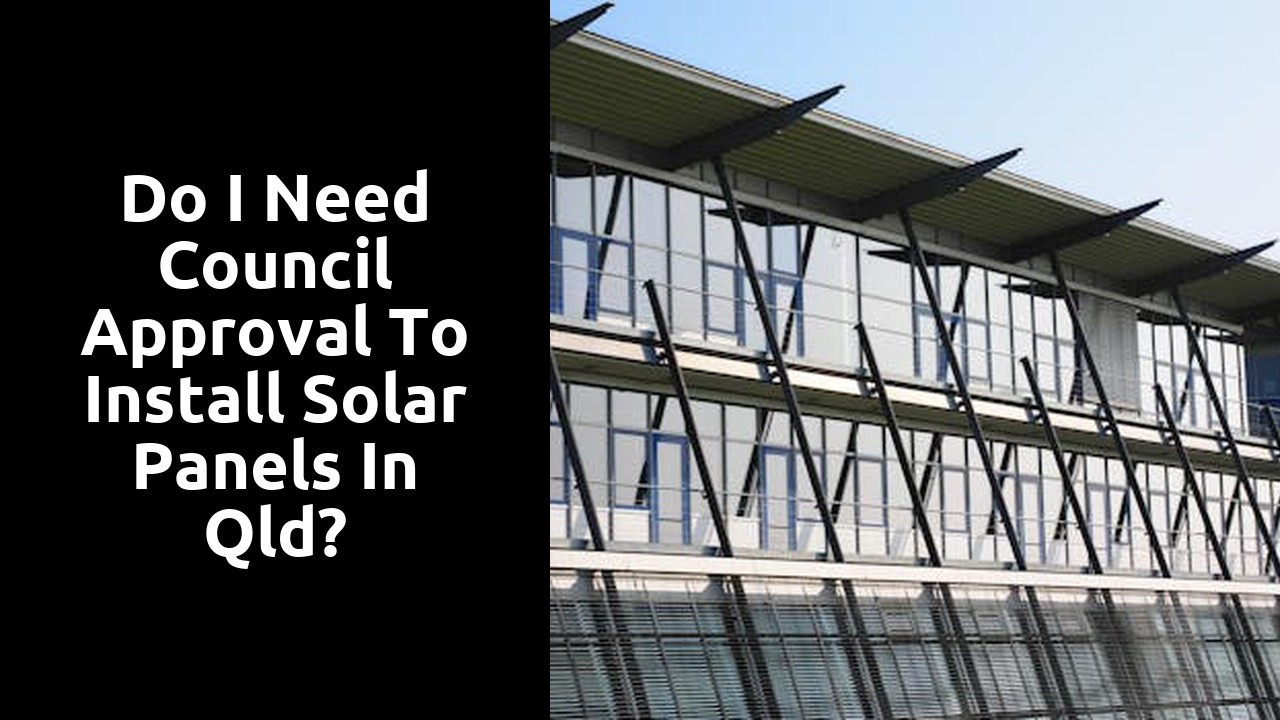Do I need council approval to install solar panels in Qld?

Alternative Options to Consider for Solar Panel Installation
When contemplating Solar Panel Installation in Queensland, it's pivotal to explore alternative options that could be more suitable for your property. One option to consider is the installation of off-grid or hybrid systems, which provide independence from the main electricity grid. These systems can be beneficial in areas with unreliable grid connection or for individuals looking to have greater control over their energy usage.
Another factor to examine when deciding on Solar Panel Installation is the orientation of the panels. Proper placement is crucial in maximizing energy efficiency. Aligning the panels in a way that captures the most sunlight throughout the day can significantly impact the effectiveness of the system. By considering alternative options and optimal panel orientation, you can ensure a more efficient and beneficial Solar Panel Installation on your property.
Exploring OffGrid and Hybrid Systems
When considering Solar Panel Installation in Queensland, exploring off-grid and hybrid systems can offer alternative options that cater to specific needs. Off-grid systems operate independently from the main electricity grid, making them suitable for locations where connection to the grid is difficult or expensive. These systems typically include storage solutions like batteries to store excess energy generated during the day for use at night.
On the other hand, hybrid systems combine elements of both grid-connected and off-grid systems, allowing users to benefit from the stability of the grid while also having the ability to store energy for backup during outages. This flexibility can be advantageous for those looking to reduce reliance on the grid while still having a reliable power source. By incorporating these off-grid and hybrid systems into your Solar Panel Installation plans, you can tailor your setup to meet your energy requirements and environmental goals.
Impact of Solar Panel Orientation on Approval
Solar panel orientation plays a crucial role in obtaining approval for solar panel installation in Queensland. The direction in which solar panels are installed can significantly impact their efficiency and energy generation capacity. When seeking council approval, it is essential to consider the optimal orientation to maximize sunlight exposure and ensure the panels can function effectively.
In Queensland, solar panels are most commonly installed facing north to capture the maximum amount of sunlight throughout the day. However, east and west-facing installations can also be considered, depending on specific site conditions and energy needs. By aligning the solar panels correctly, homeowners can increase the overall energy efficiency of their system, making it more attractive when seeking approval for solar panel installation.
Maximizing Energy Efficiency with Proper Placement
To optimize the energy efficiency of your solar panel installation, choosing the right placement is crucial. In Queensland, ensuring that your solar panels receive maximum sunlight exposure throughout the day is essential for harnessing the full potential of solar energy. By placing the panels in a location with minimal shading and facing them towards the north, you can enhance their performance and increase the electricity output of your system.
Moreover, considering the angle of inclination for your solar panels is paramount for energy efficiency. The ideal tilt angle will vary depending on your geographical location in Queensland. A professional installer can assess the best angle to position your solar panels to capture the maximum amount of sunlight year-round. By strategically placing your solar panels to optimize sunlight exposure, you can make the most of your solar panel installation and reduce your electricity bills.
Financial Incentives for Solar Panel Installation in Queensland
Financial incentives play a significant role in encouraging individuals and businesses in Queensland to invest in solar panel installation. By leveraging various rebates and feed-in tariffs offered by the government, residents can offset a portion of the initial costs associated with setting up solar panels. These incentives not only make solar panels a more affordable option but also contribute to the overall sustainability goals of the region by promoting renewable energy practices. Understanding the intricacies of these financial incentives and how they apply to solar panel installation can help consumers make informed decisions when transitioning to solar energy.
Understanding Rebates and Feedin Tariffs
Understanding rebates and feed-in tariffs is crucial for individuals considering solar panel installation in Queensland. Rebates are incentives offered by the government to encourage the uptake of renewable energy sources like solar panels. These rebates can significantly offset the initial cost of installing a solar panel system, making it more financially feasible for homeowners. On the other hand, feed-in tariffs involve being paid for the excess electricity generated by your solar panel installation that is fed back into the grid. This can provide a source of passive income for homeowners, further enhancing the financial benefits of solar energy. By understanding and taking full advantage of these incentives, individuals can make the switch to solar power more affordable and rewarding.